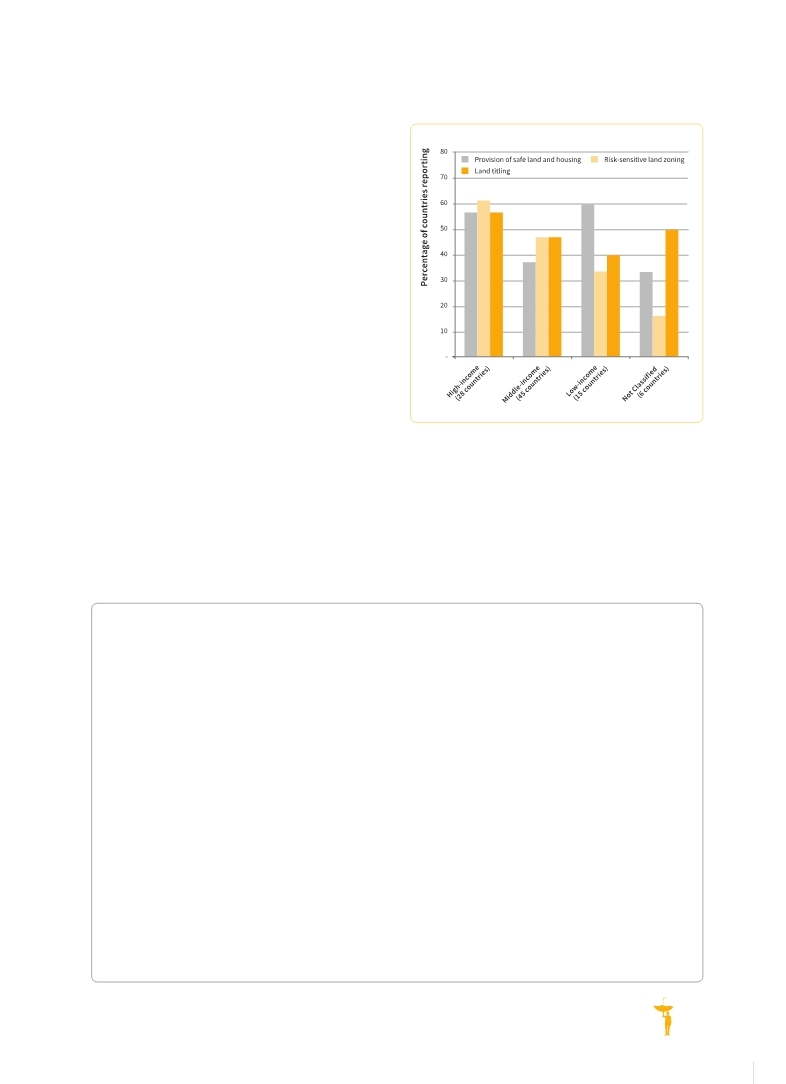
213
(Source: UNISDR, based on HFA Monitor data 2011–2013)
Figure 14.3 Number of countries reporting on regulatory mechanisms for risk-sensitive land use
sponse to integrating disaster risk. Lesotho notes that the sectoral legal framework needs further strengthening and greater emphasis required to promote implementation of decentralized disaster risk reduction (DRR) activities.
Captured under HFA priority area 4, countries continue to make less progress across all three HFA reporting cycles since 2007 and the figures are sobering: of the countries that reported, only half confirm having in place simple regulatory mechanisms for providing safe land and housing for lowincome communities, for risk-sensitive land zoning and private real estate development, or for land titling (Figure 14.3). From that perspective national policies, institutional frameworks and legislation on disaster risk management have been largely peripheral in addressing the underlying risk drivers, through which disaster risks accumulate.
In many countries, legislation that mandates risksensitive investment and development is in place and budget allocations for disaster risk manage-
ment have increased. However, the HFA Progress Reports of 2011–2013 highlight the continued challenge of implementing these policies, strategies and laws. As highlighted by previous
(Source: UNISDR)
Box 14.2 Implementation gaps
China reports that, although it has a relatively coherent disaster prevention and reduction law and regulation system, it struggles with implementing risk reduction efficiently and even of integrating its response mechanisms.
India, owing to its federal state system, struggles with lack of synergy and complementarity of national and state policies and institutional structures. Relatively new state and district disaster management agencies may have limited capacity and lack authority vis-à-vis better-established national institutions.
Germany faces similar challenges with strong federal states (or Lnder) whose disaster management strategies are rarely coordinated with each other or with the national system.
Niue reports that, although limited capacities in each sector can result in implementation problems, the key issue is lack of ownership for cross-sector coordination and local implementation.
Uruguay strengthened the risk management capabilities of municipalities, while recognising that decentralized management requires commitment and installed capacities at local and departmental levels.
Myanmar established an action plan on disaster risk reduction for 2009–2015, but will have difficulties enforcing it without policy guidance or directives for townships and villages, where gaps already exist.
Pakistan cites a dependency syndrome of local institutions and communities on provincial and federal governments in managing local disasters. Enforcement on the ground and accountability at all levels tend to be weak, confirming once again findings from the 2011 Global Assessment Report.


